Retention Marketing: How to Build a Retention Strategy that Works

You’re leaving cash on the table for your competitors to sweep up if you don’t have a strategy for retention marketing.
So, in this blog we’ll show you how to keep your customers happy with a targeted retention strategy. And remember – happy customers are paying customers.
Congratulations! You’re signing up new users for your SaaS product every day.
Leads are quickly turning into users and you’re thinking: “Job done. My marketing is working.”
But is it?
Are you making any profit yet? For that matter, are you making any revenue yet?
What’s your new user churn rate looking like?
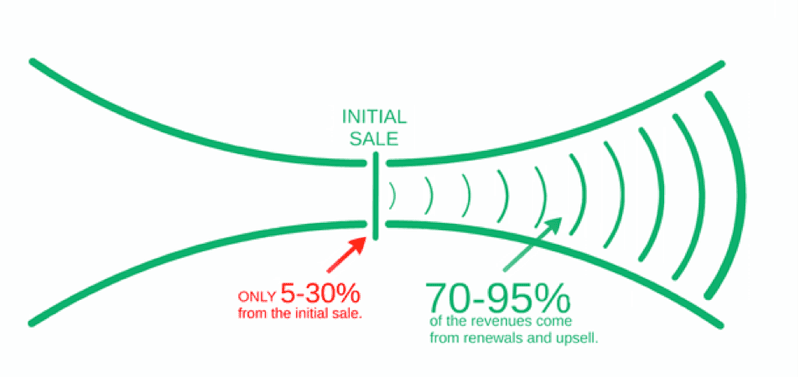
Source: Guy Nirpaz, Totango
In his blog, we’ll show you why profitability and growth depend on retention marketing; how to measure retention; how to reduce churn rate, and how to develop a strategy for keeping and growing your customers through the critical early stages and beyond.
- What is Retention Marketing?
- How to Measure Retention
- Day 1 Retention
- Week 1 Retention
- Month 1 Retention
- Retention Marketing after the First Month
What is Retention Marketing?
If “marketing” is only a matter of new customer acquisition for you, then you’re missing the point of being in SaaS.
Why?
Because you’re in the recurring revenue game, not the one-off purchase game. The overwhelming majority of SaaS business revenues come from renewals and upsells, as the diagram above shows.
That’s why you need to be doing Retention Marketing.
The fewer existing customers you lose through churn, the fewer new customers you need to add to grow your revenue and your business.
And there is a lot of evidence to show that retention marketing is the most powerful tool at your disposal. A regularly-cited study by Bain and Company found that increasing customer retention rates by 5% increases profits by between 25% and 95%.
Say that again?!? With a picture this time…
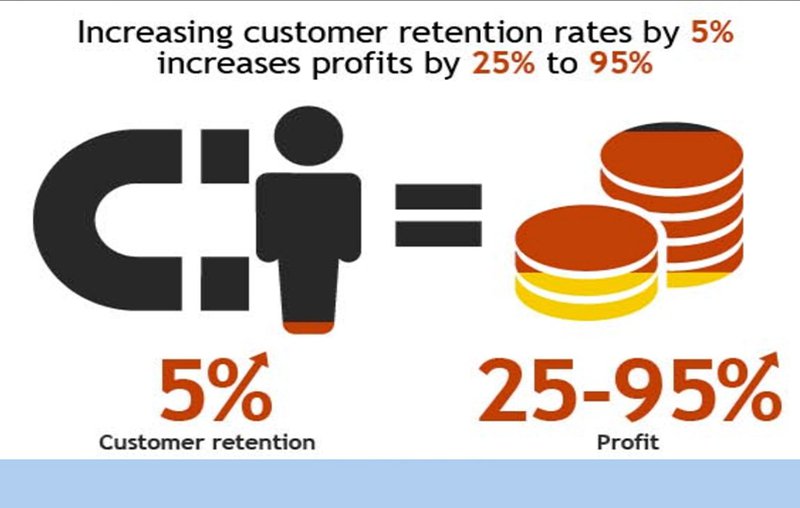
Source: clientinsight.ca
Pretty spectacular, right?
Retention should be the key metric for all SaaS businesses, and so a retention strategy should be of paramount importance. Retention is the principal factor behind Customer Lifetime Value (CLV).
Why is retention marketing not always given the prominence it deserves?
Well, it may have something to do with retention being such a “laggy” metric.
As Andrew Michael of Churn FM explains in this video (2:00 to 2:28):
More often than not, when people start to look at retention, it’s really too late.
So many factors feed into it, it can be segmented in so many different ways and it’s often so hard to forecast that SaaS businesses can find it easier to focus on other, less critical metrics.
Isn’t retention just the flip side of churn?
On one level, yes. Your churn rate is 100% minus your retention rate, and your retention rate is 100% minus your churn rate.
But on another level, tracking churn instead of retention is a missed opportunity. Churn is negative – it relates to lost customers and analyzing it shows only why you lost them.
It is notoriously hard to change a customer’s mind once they have decided to leave. So, as Andrew Michael says (10:27):
Prevention is better than churn.
In contrast, retention relates to customers you kept. Studying retention shows why they stayed on board, how you made them happy and how they got value from your product.
And when you know that, you can make them happier, give them more value and keep them on board for longer. That means more revenue, more opportunities to upsell more services to them and more referrals from word of mouth and positive reviews.
So, Retention Marketing is the proactive work you do to keep your existing customers.
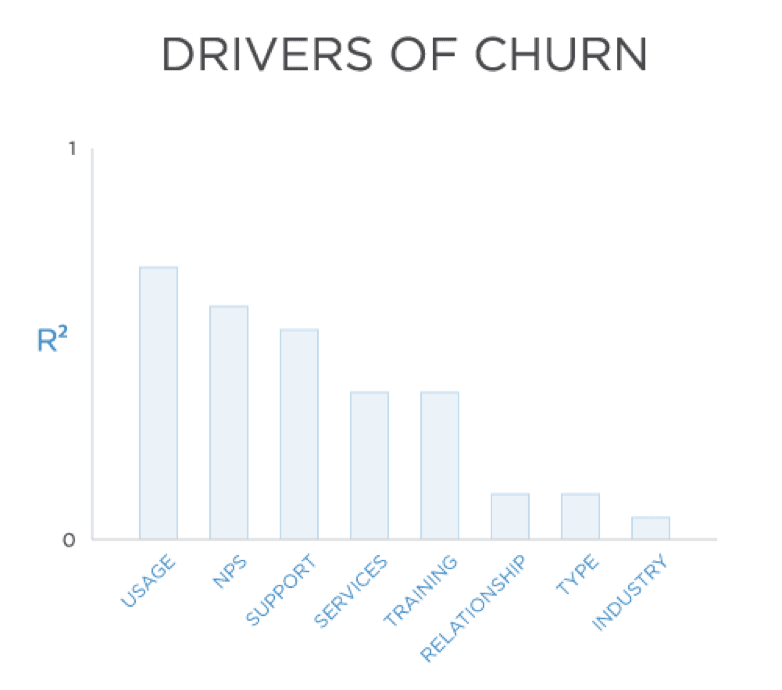
Source: neilpatel.com
The reasons why customers stay and why they leave vary between all businesses. But time and time again, Usage has been shown to be the biggest single factor. Customers who do not use your service do not see value from it.
If they don’t see value from it, they won’t keep paying for it.
So promoting usage will be the centrepiece of our retention strategy.
How to Measure Retention
It is often said that SaaS as a sector gets above-average retention rates. According to Mixpanel research from 2017, the cross-sectoral average rate was 20%. For SaaS companies, it’s closer to 35%.
If that’s not where you are, don’t panic…
The ideal rate for retention marketing depends entirely on your business model. If it’s more cost-effective in the important respects (profitability, cash flow etc) to acquire new customers than to retain old ones, do that instead.
It’s easy to get hung up on sectoral benchmarks that ignore the huge variety of business types covered by a term like “SaaS” – which range from the incredibly sticky, such as AWS and Microsoft Azure, to services customers may only use rarely.
All that matters is:
- The retention rate you have now
- What that means for your business
- The rate you need to achieve to hit your business goals
- How you get there from where you are now
Ignore everyone else and concentrate on what you need.
It is also critical that you pick a retention measure that is appropriate to your business.
Yes, there are different ways of measuring retention… For example:
- User Retention: This is the percentage of your individual users who renew month-on-month, quarter-on-quarter etc.
- Recurring Revenue Retention: The percentage of your incoming revenue that renews month-on-month, quarter-on-quarter etc.
This can make a huge difference.
If you’re only tracking User Retention, you may be delighted to have only lost ten out of 100 users in a month (a 90% retention rate).
Would you be so pleased if you knew that those ten where your highest payers, accounting for 30% of your revenue?
Probably not.
That brings us on to the importance of segmentation in retention marketing. Once again, your gross user retention rate could be 90% – but what if all the churning users are leaving in their first month?
The solutions you would implement if you had this insight from a Cohort Analysis would be very different from what you would do if those users were evenly spread between age cohorts.
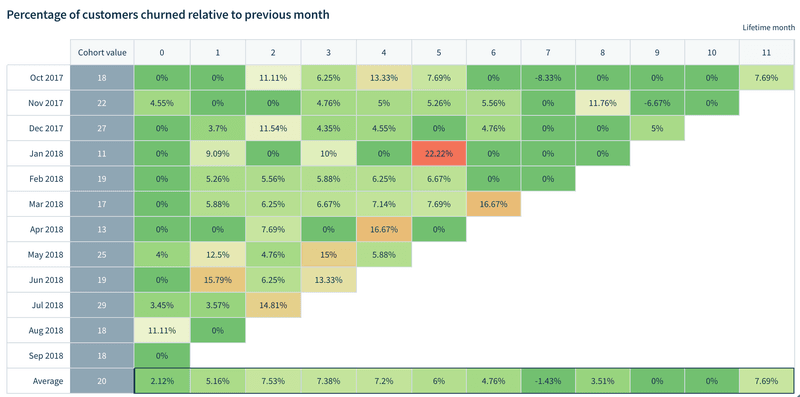
A vital pair of segments to track – if you’re going to treat retention marketing as an opportunity for revenue growth – is: what customers are paying versus what they could be paying.
As we’ll show later, upsells to existing customers are a massive source of revenue opportunity. InsightSquared has found that up to 35% of Annual Customer Value comes from upsells!
Your churn rate won’t tell you where those opportunities are.
Other vital segments to track include:
- User goals
- Experience levels
- Usage rates
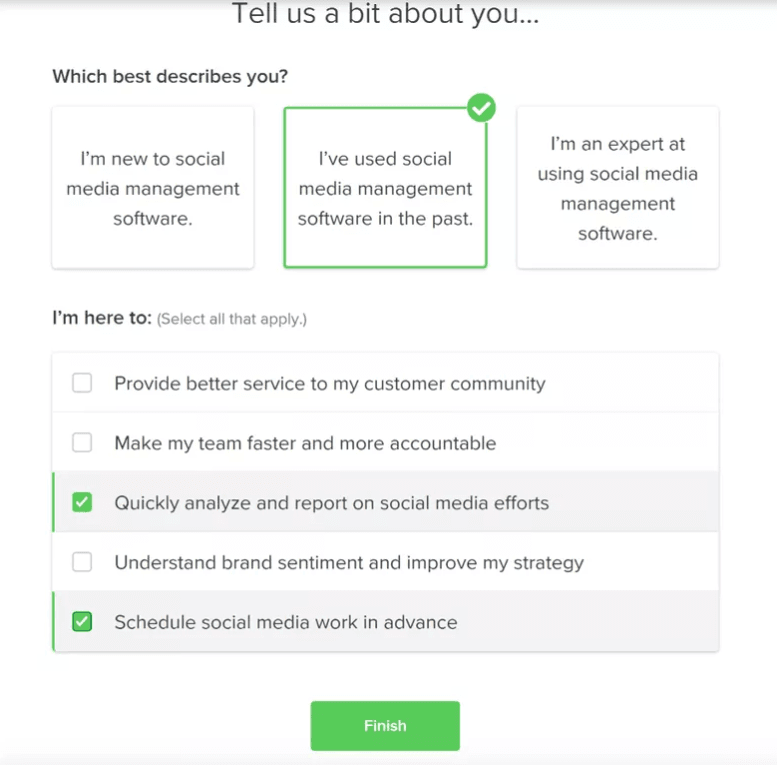
Once you have selected your segments and worked out how to track them, you must map the customer journey for each segment.
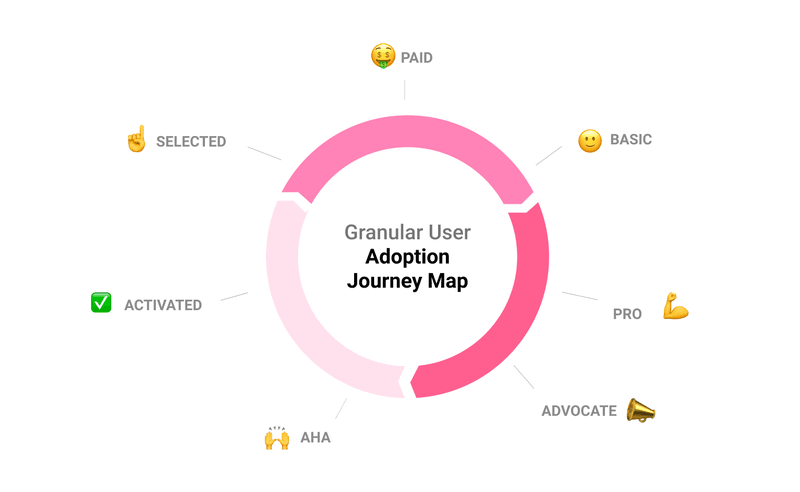
Source: userpilot.com
What does a user in each segment need to achieve their goals at each point along the map? What must not happen?
Once you know that, your Retention Marketing is aimed at making sure the right things happen and the wrong things don’t.
As we’ve already mentioned, what a user needs to (i) stay on as a user and (ii) progress along the customer journey changes over time.
So your retention strategy must track that progress and provide the right interventions at the right time.
That’s the difference between a retention strategy and a collection of retention tips… Just sayin’, fellow bloggers.
Day 1 Retention
It should go without saying that the most critical single day in the customer journey is Day 1.
If a user cancels on the same day that they sign up… well, you’re not going to make a lot of money out of them, are you?
No matter what your SaaS, your retention marketing must provide a great Day 1 experience. That doesn’t just mean that the new user doesn’t cancel. It means that they got what they were looking for and they are now likely to come back.
Put yourself into the mind of your new customer.
Why did she sign up for this SaaS today?
Usually, it will be because she has an immediate problem she wants to address and thinks that your SaaS will help to solve it. Once that Activation moment occurs (the ‘AHA!’ moment) – when they feel the value they anticipated, a new user has made a vital leap forwards.
You must minimize the time and friction it takes to realize that value.
This can involve:
- A Welcome Screen, making new users feel valued and explaining how to get started.
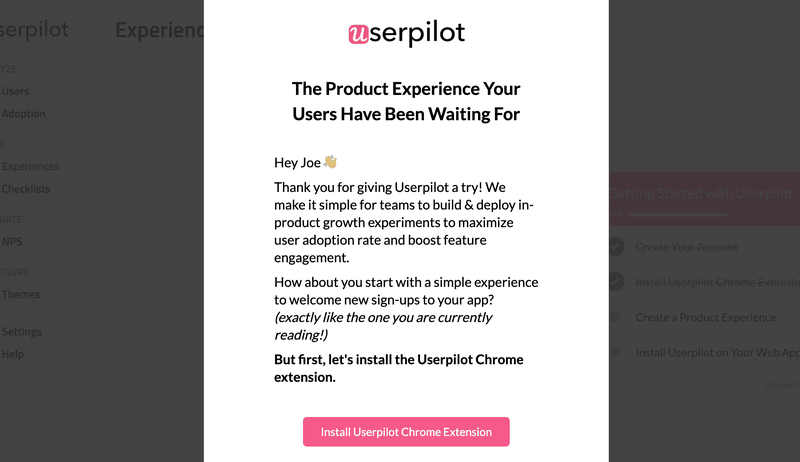
Source: userpilot.com
- An Onboarding Checklist, making it visually clear to users what they need to do to start using your service.
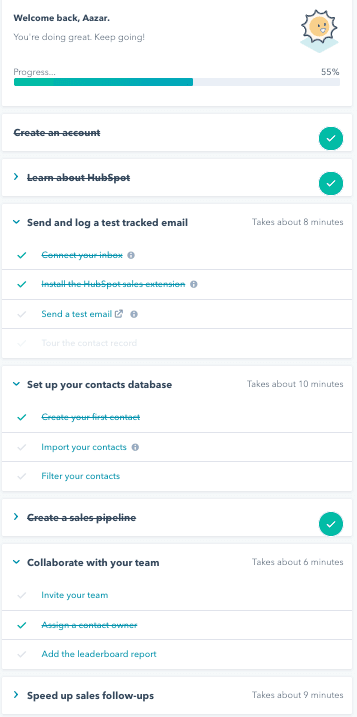
Source: hubspot.com
- Contextual in-app tooltips, that show users how particular functions work.
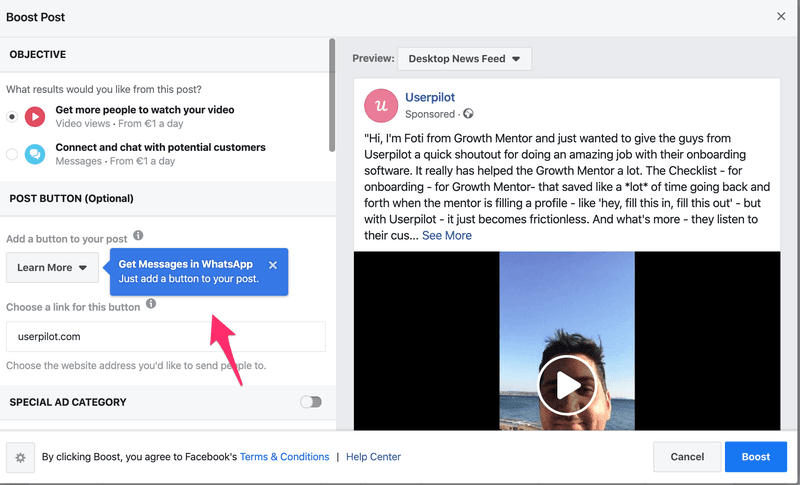
Source: facebook.com
- Interactive Walkthroughs to help users get set up and learn by doing.
Conversely, eliminate everything that gets in the way of the new user achieving their goal as quickly as possible.
- Do not force new users to sit through a comprehensive Product Tour. They may not be interested in all of your features right now and making them sit through something that is boring to them could result in disengagement.
- Do not pester users with Requests for Feedback until you have delivered value to them.
- Only ask for as much detail as you need at this point for the user to achieve their immediate goals.
Your Help Widget is going to be important on Day 1. No matter how much proactive onboarding support you make available, some users will have difficulties or special requirements.
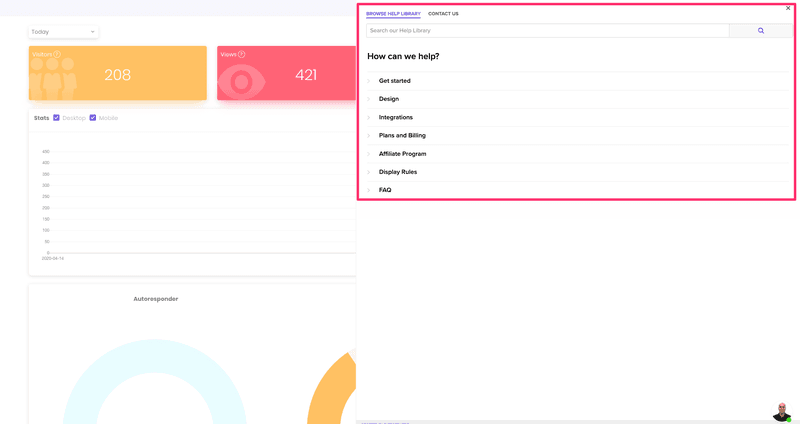
Source: Poptin.com
Remember, at this point, it’s all about making a good first impression. Make it easy for users to solve their problems quickly:
- If you provide Live Chat support, make sure new users’ questions are dealt with as close to real-time as possible and that agents do not leave the conversation until the problem has definitely been solved.
- Refer users to FAQs and Help Documentation in a contextual way – if your in-app tracking shows they are struggling with a particular activity, proactively point them towards the answer. Don’t expect them to find the right document for themselves.
The final piece of Day 1 retention marketing advice is this:
Set user expectations early.
Don’t over-promise at this stage.
If your product is in beta and certain features don’t work perfectly; if there are dependencies the user needs to address before your service will deliver value for them; if it will take time for the benefits to come through; let the user know.
Nothing frustrates like falling short of expectations.
Before we move on, a word on discounts.
As a general rule, it is a bad idea to use general discounts as an acquisition tactic for SaaS companies:
- It undermines the value proposition of your service
- You attract “deal seekers” who are more likely to switch supplier
Studies have shown that up-front discounting can slash SaaS Lifetime Customer Value (LTV) by over 30%.

Source: priceintelligently.com
Week 1 Retention
If your Day 1 mission is to help users achieve their immediate goals and become Activated, Week 1’s objective is to get them to do it again.
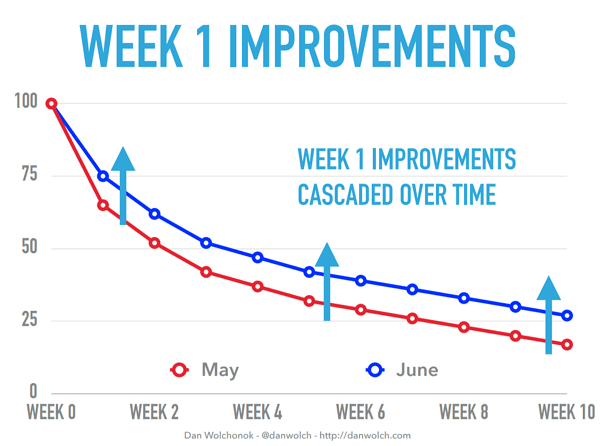
Source: danwolch.com
Research has shown that improvements to Week 1 retention cascade over time, having a huge effect on revenue and profitability downstream.
Establishing repeat use is essential to any renewal business. Week 1 is where this happens.
You will probably need to use different tactics to tackle different groups of users.
Some people won’t have logged in again since their first attempt. You can’t afford to ignore them.
The average business uses between 26 and 124 SaaS products. How do you know your users aren’t trying out the competition and forgetting all about you?
Clearly, in-app prompts are no use here. So remind them of what they’re missing via email!
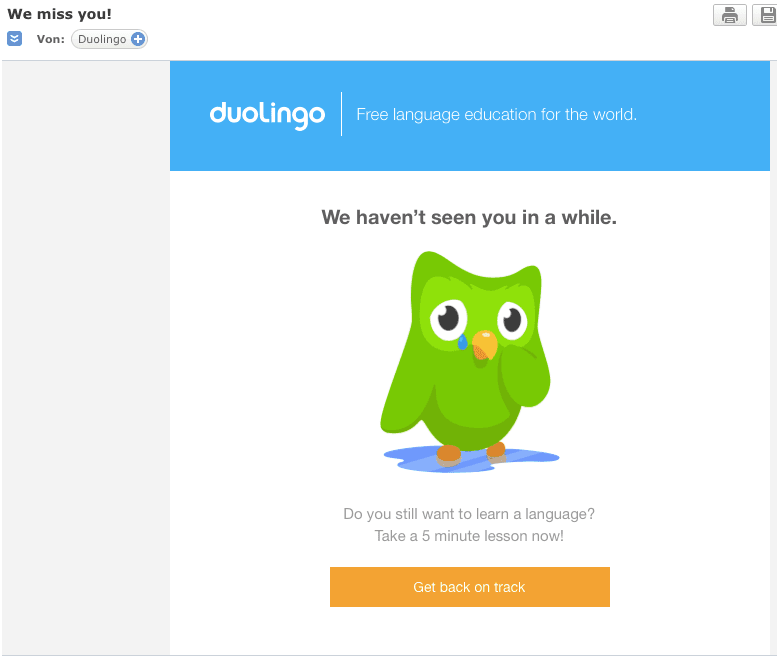
But don’t overdo it. Duolingo has become the source of many jokes for its excessive persistence in this regard.
As we’ve said in many previous blogs, deepening user engagement and progressing users along the customer journey is often a matter of showing more and more value over time.
On Day 1 your users learned how to get the basic value out of your service.
Now we need to show them what else we can do!
This is the point at which Product Tours become more appropriate. Once the user has adopted the core features of your product and become activated, they are far more likely to want to know about the full capabilities of your service.
👉 Btw. if you want to learn more about user adoption, don’t miss our FREE Adoption School email course:
Alternatively, allow users to find additional features themselves, introduce them contextually (reactive onboarding) and give users the option to explore further.
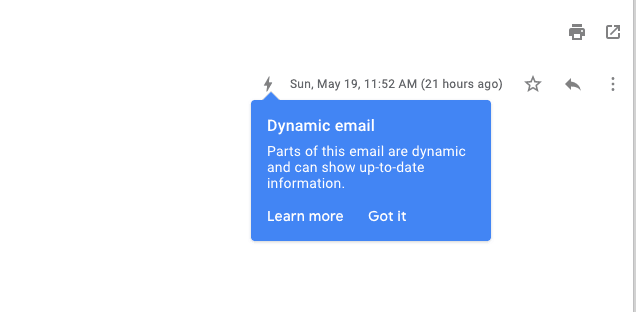
Source: gmail.com
All the Day 1 advice on minimizing time and friction to value applies here too, of course.
Now, as we mentioned earlier on usage and value are the most important factors that affect retention. But they’re not the only ones.
How users feel about your company, your product and your team makes a difference too.
Although you shouldn’t do this at the expense of making sure customers see value, you can help lock them in by delighting them with the experience of working with you. That can create a sense of loyalty that will also affect retention.
Convertkit, for example, cut churn by 14.7% in a single month by sending personalized welcome videos to new users. Not scalable, but something that really showed new users that Convertkit cared about them.
Besides value, having great UX and great Customer Support are the things that will win you loyal customers. Indeed, according to a study by New Voice Media from 2018, poor Customer Service costs US businesses $75 billion every year!
Month 1 Retention
After the first week, your retention strategy should look at:
- Establishing a pattern of use
- Building a relationship with users
- Getting them past the payment hurdle
Once again, everything we’ve said about realizing value on Day 1 and in Week 1 applies here.
More Value
If your users are not discovering new sources of value for themselves, now is the time to start proactively directing them towards these value milestones.
- Promote user learning with your Document Library and FAQs.
- Develop and encourage supportive user communities to share best practice and experiences.
- Start putting your Customer Champions in front of users to show how the most engaged users (those at the Advocate stage) are getting value and using your service.
- Publicize newly launched features wherever you can, in-app and out.
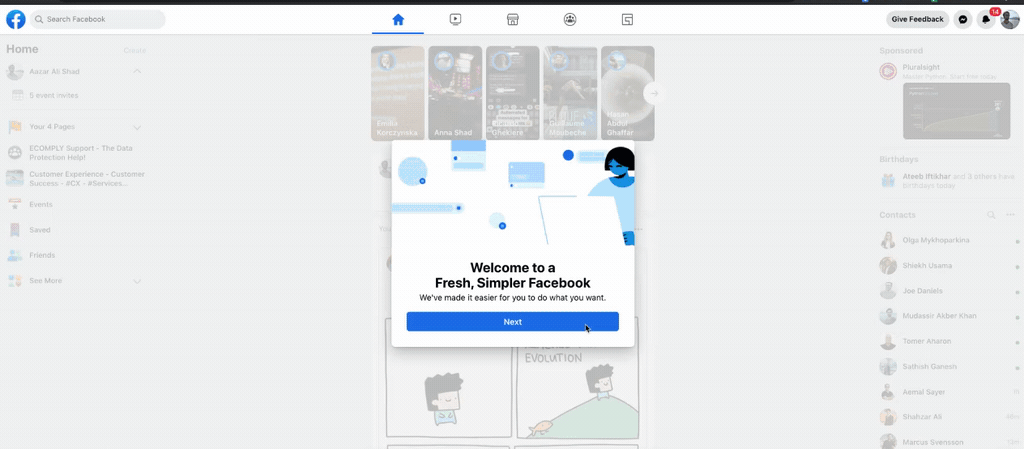
Source: facebook.com
It’s at this point for many SaaS companies that user segments will start to diverge from one another – that is, as different groups begin to find most value in particular use cases and patterns.
So, this is where a Customer Health Score system can come in handy.
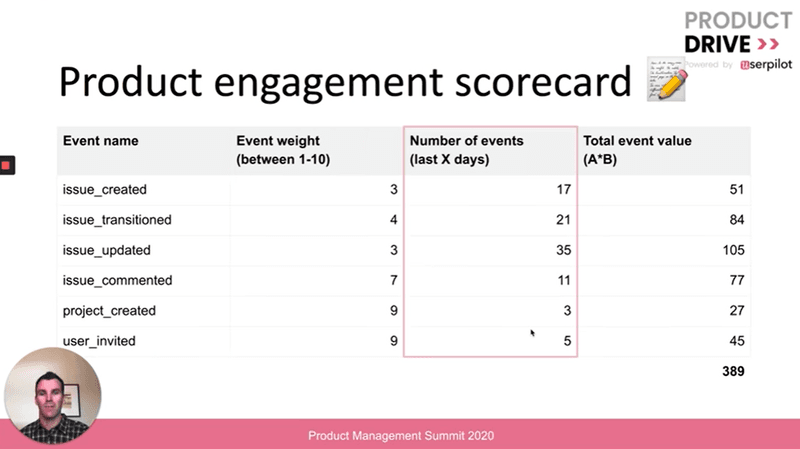
Source: Patrick Thompson, Iteratively
Patrick Thompson of Iteratively did a great job of explaining this concept in his recent ProductDrive talk. In a nutshell, you apply weights to various different user actions and combine them to come up with an overall engagement score.
This can be really helpful when there are multiple routes to value.
Deeper Relationship
Once users are consistently seeing value – and progressing from the Activation phase – it’s time to start complementing that by building a relationship with your retention marketing.
After all, it’s Service as well as Software, right?
- First and foremost, provide great customer service – with a human touch wherever possible.
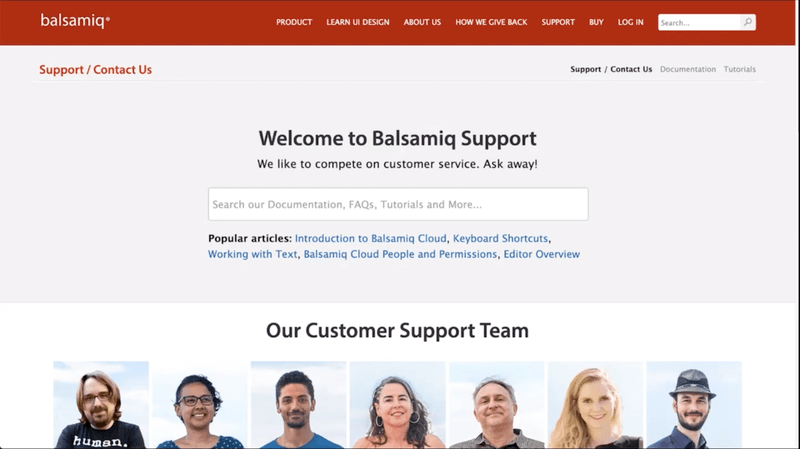
Source: balsamiq.com
- Set expectations about your interaction schedule, and provide the level of touch that users show by their behavior that they need. Independent, low-touch users will prefer to learn and engage at their own rate, while others will appreciate more involvement.
- Start looking for feedback. There’s a lot of evidence to show that user don’t like being asked for their opinions too early or too often. But if you can get users providing suggestions for improvements – and then act on them – it is really powerful for building engagement.
- Involve users in the product development process. Find out what they need and what they would like to see added. If you can design new features for existing users rather than new users, you will bolt down a loyal core of committed customers.
There are many other tactics you can start using now to build a stronger relationship:
- Give away freebies and swag to your fans.
- Provide incentives for users to refer you to their networks (as Andrew Michael says (3:50) 40% of SaaS product growth comes from word of mouth).
Time to Pay
As we mentioned earlier, most users will hit a pay point during their first month – and this can be a major cause of churn if it’s not handled well.
Arrange the user experience so that there is as little friction in this moment as possible.
- So collect payment details at sign-up – don’t leave it until now!
- Make your payment process as simple and easy as possible, to avoid people dropping out
- Don’t be awkward – make it easy to leave if that’s what users really want to do. But make sure they know what they’ll be losing by cancelling your service. Remind them of the value they achieved and how difficult it will be to get that elsewhere.
Retention Marketing after the First Month
Having a strategy means being prepared.
Stuff happens.
Good stuff and bad stuff.
That’s unavoidable.
You can’t always know when it’s going to happen, but you can be ready for when it does.
In this final section, we’ll look at a few situations your retention marketing should be ready to cope with.
#1 Something Went Wrong…
Own your mistakes when they happen – and they will happen.
Hubspot found that 96% of continue to buy from a business they regularly use when it makes a mistake – so long as they apologized and made it right.
Big problems handled well can occasionally turn into PR opportunities, as this famous KFC ad showed:
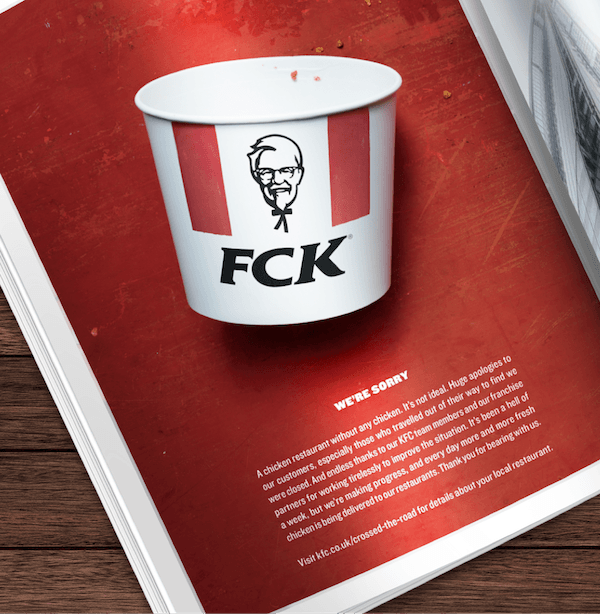
Source: hubspot.com
So, don’t throw away everything you’ve learned this far just because you’ve got a service outage or there has been a security breach.
Put yourself into the shoes of your customers and work out what would be important to then now that this has happened.
And plan your responses accordingly!
#2 Credit Cards Expire
Every three to five years, each one of your customers is going to have to update their payment details.
So that will affect between 1.7% and 2.8% of your customers every month on average.
If you know this date in advance, you can proactively remind customers when it’s approaching. Many payment providers now include automatic updates, but if that’s not available to you – this is a scenario you will need to plan for.
#3 Find Upsell Opportunities!
Could your most successful customers be paying more? This is something your retention strategy needs to take into account.
This is easier to do when your pricing tiers are arranged in a simply scaling manner – more success, more users!
Make scaling up simple and straightforward, and – once again – be proactive when you see that a user could get more if they paid more.
So that’s how to use retention marketing strategically.
If you have any other tips or advice on retention marketing, please comment below!
And don’t forget to sign up for our newsletter to stay in the loop with more user adoption & retention tips!

